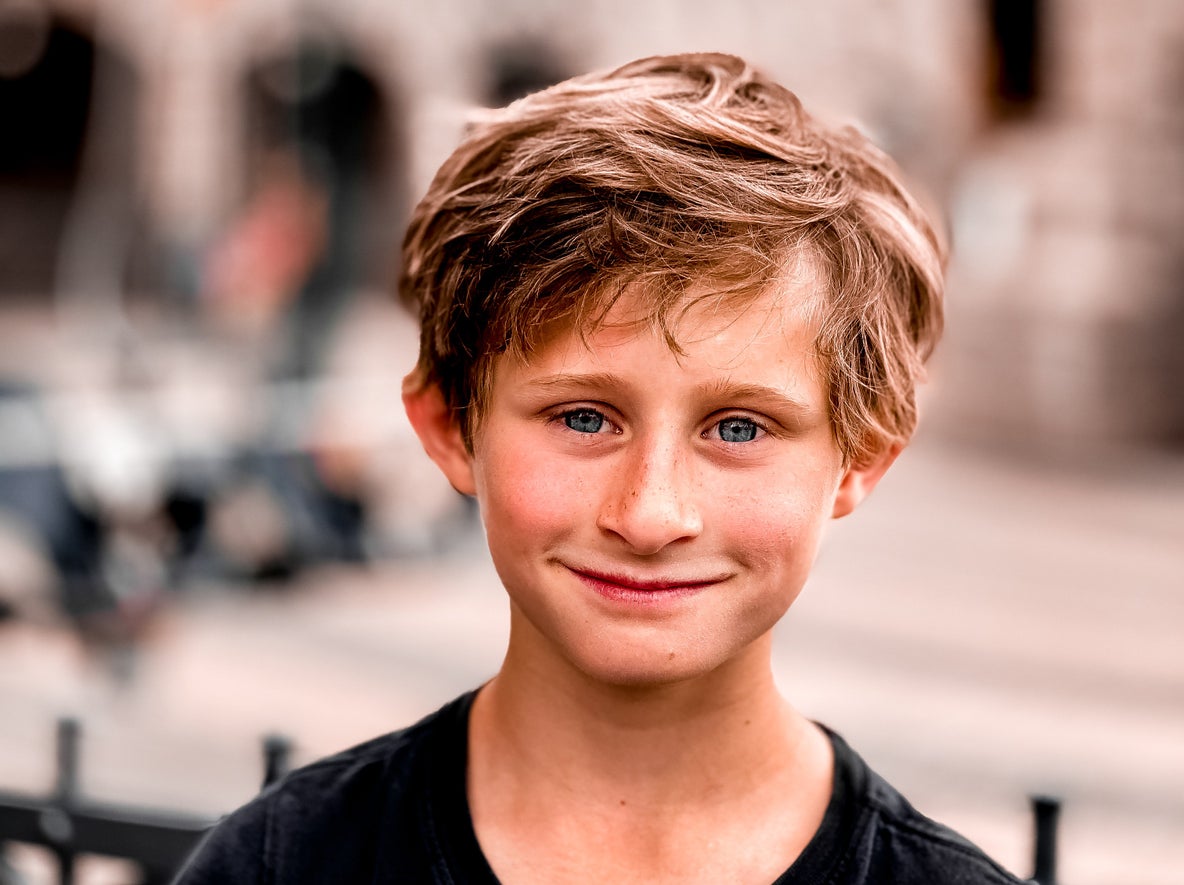Make sure you've got your child's back


For kids, bike riding is first and foremost fun and games. They don't even realize how much good they are doing themselves in the process. They casually train their endurance, mobility, coordination and last but not least, their backs.
The child's back
The spine is a boney organ. Yet it is not a rigid column, but a flexible structure consisting of individual vertebrae. The surrounding musculature keeps the spine in the proper position – and of course these muscles should be strengthened early on.
A child's back is constantly growing, and its muscles and bones are not yet fully developed. The bone structure of a child is much more elastic and low calcium deposits make it less able to withstand pressure and bending. For this reason, its support system (bones, joints, ligaments, intervertebral discs) is much less resilient than in adults. Still, this doesn't mean that you have to pack your child in cotton padding – to the contrary! Strengthening the musculoskeletal system is hugely important, as you'll soon find out. An active lifestyle – that is, regular physical activity during childhood – can optimally encourage your child's development, especially bone and muscle development.
So, why do many children complain of back pain?
Your little ones have a ravenous appetite for exercise and never miss an opportunity to run around, jump and climb. But this often changes abruptly after a certain age, usually when the child starts school. It is the nature of this phase of their lives, of course, that your children have to do more and more sedentary activities, in the morning at school, and in the afternoon doing their homework.
But sitting for hours on end is poison for the back. The spine is usually only heavily loaded on one side; the untrained supporting muscles (neck, back, abdominal and buttock muscles) shrink and can no longer fulfil their stabilising function. The risk of injury, poor posture and back pain increases.
This makes it all the more important to compensate for all that sitting by getting enough exercise during leisure time, so that the spinal system stays strong over the long term, ideally for a lifetime. The World Health Organization (WHO) currently recommends that children and adolescents between the ages of 5 and 17 engage in moderate to strenuous activity for at least 60 minutes a day to strengthen muscles, mobility and bones. This is really nothing new, but numerous studies show that children in our latitudes are moving less and less these days. You don't have to search long to find the possible culprit:
- increasing digitalisation has led to more screen time, which means more sitting time.
- At the same time, the expansion of public transportation systems means that even short everyday distances can be covered comfortably in a seated position.
- Whereas half an hour's walk to school or three kilometres by bike to a sports club used to be commonplace and were unconsciously integrated into the daily routine, nowadays children often use the taxi of mum and dad for short distances rather than hopping on their bike. You can read more about cycling to school safely here.
Can riding a bike help?
The short answer is, yes, cycling can promote a healthy child's back and prevent damage caused by bad posture. But there are a few basic things to be aware of to avoid the opposite effect:
- The most important factor in making your child feel comfortable on the bike is to have a child-friendly bike. Along with size and weight, you should make sure there are as many ergonomic components as possible. Here you can read in detail the requirements a children's bike should meet.
- The right posture is vital. You should adjust the bike perfectly to ensure that your child can assume a healthy sitting position. A slightly forward-leaning upper body is ideal for the back. This position provides good shock absorption even on bumpy surfaces, protecting the intervertebral discs. If the child's arms are stretched out or the pelvis is tilted backwards and your child drops into a hunched position, their posture is definitely wrong.
- The dose makes the poison. Under no circumstances should your child summit a new peak every day. One-sided loading or excessive high-performance training can be just as damaging to growing children over the long term as sitting for hours on end. So, try not to overdo it, and always adapt the tour to the age and fitness level of your child.
"What is used, develops. What is unused atrophies," wrote Hippocrates of Kós. In this spirit, moderate athletic activities that involve as many different muscle groups as possible are recommended for growing children. This is precisely the case with riding a bike.
- Cycling trains all of the body's major muscle groups (back, chest and abdominal muscles as well as gluteal and leg muscles). Even if it doesn't look like it, the muscles of the core are always actively involved in stabilizing the upper body.
- Even small muscle groups, like the supporting muscles around the individual vertebrae, can be targeted. The asymmetrical – that is, diagonal – pedalling movement stretches and contracts these small muscles, which, by the way, you cannot consciously activate, but only train through movement. The precondition for this is a slightly forward inclined position, as described above, which at the same time optimally eases the load on the growing spine.
- The cyclical, recurring leg movements can also help with existing back problems.
Don't forget to stretch! As has already been said, the muscles are still growing. In this phase in particular, stretching is very important in order to prevent one-sided shortening of muscles.
Competition from digital media often makes it difficult for us parents to get the kids excited about exercise.
- Being active is double the fun with friends. So plan joint rides with friends and their kids.
- One way out of this conundrum is a sports club. After all, sport is most fun as part of a group or with friends with shared interests and quickly becomes routine. Your child will also be motivated to train in a playful way under professional guidance.
- Introduce fun and engaging exercises to help your child improve their bike riding skills - for a safer and more fun way to explore the world on two wheels.


